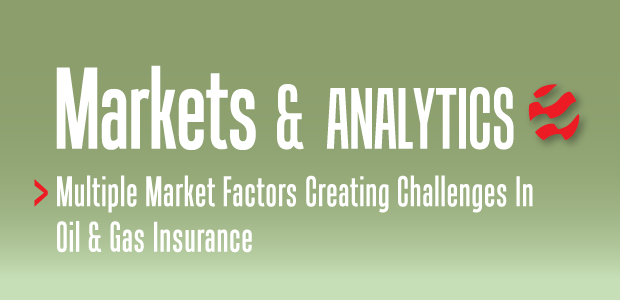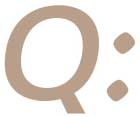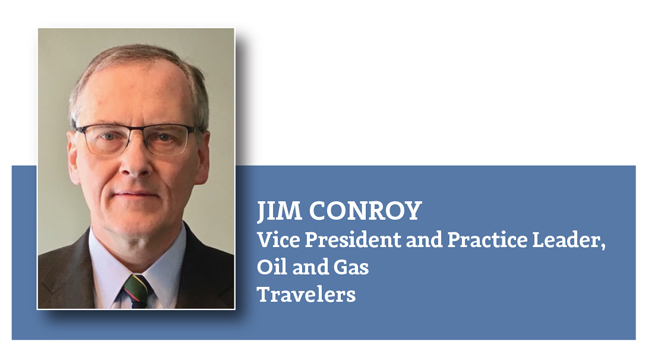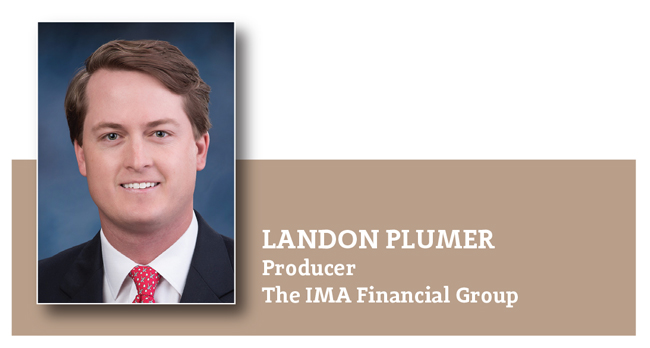
Insurance Update
Multiple Market Factors Creating Challenges In Oil And Gas Insurance
Editor's Note: From the emergence of a global pandemic last spring to wildfires and tornadoes in the summer and hurricanes in the fall, the events of 2020 underscore the fundamental importance of having a properly designed insurance program in place to safeguard against the unpredictable. The good news is that the clock is about to run out on 2020. With multiple COVID-19 vaccinations expected to be ready for distribution during the next few months, the economic outlook for oil and gas and every other business sector is forecast to steadily improve as 2021 progresses. But how have insurance markets been impacted by the events of the past nine months, including oil-and-gas-specific coverage lines? What can producers and their allied service company partners do to better manage insurance costs while tactically reducing risk exposures across their operations? To find out, AOGR presented a series of questions to Jim Conroy, vice president of Travelers Oil & Gas, and Landon Plumer, a producer with The IMA Financial Group Inc. Questions are in italics, followed by the panelists’ responses.
 It is hard to imagine a more tumultuous year than 2020. The pandemic affected all aspects of daily life, and was a major disruptive event in oil and gas markets. What will be the net effects on upstream insurance and risk management? How is the experience of 2020 shaping upstream insurance trends for 2021?
It is hard to imagine a more tumultuous year than 2020. The pandemic affected all aspects of daily life, and was a major disruptive event in oil and gas markets. What will be the net effects on upstream insurance and risk management? How is the experience of 2020 shaping upstream insurance trends for 2021?
CONROY: I don’t think anybody is going to be sad to see 2020 in the rearview mirror, least of all the oil and gas industry. The economic slowdown resulting from the pandemic and the subsequent drop in commodity prices have depressed the industry’s incentive to explore and produce. Our premium levels rise and fall with our customers’ insurable exposures, and oil and gas companies have presented lower payrolls and revenues this year as they have hunkered down and waited for the economy to recover.
During periods of low activity, operators may need to shift focus or use remote monitoring to spot issues they normally would catch during day-to-day operations. For example, when operators visit a site less frequently, they have a lower chance of catching a small leak or other problem before it becomes a major issue. When employees are on site less often, the risk of trespassers and vandalism also grows.
From a workers compensation standpoint, companies have had to add COVID protocols. The good thing about oil and gas relative to sectors such as retail or restaurants is that much of the activity happens outdoors and at remote sites. Also, workers are used to wearing personal protective equipment such as proper boots, hard hats and safety glasses, so wearing masks when work needs to be done near other people is not as disruptive as in other sectors.
 With pending distribution of multiple vaccines, analysts forecast U.S. drilling and completion activity will continue a gradual, albeit tempered recovery. What are the primary risks from an insurance perspective as operators start putting drilling and completion programs back on the calendar? Are there any policy types or coverage areas of particular concern?
With pending distribution of multiple vaccines, analysts forecast U.S. drilling and completion activity will continue a gradual, albeit tempered recovery. What are the primary risks from an insurance perspective as operators start putting drilling and completion programs back on the calendar? Are there any policy types or coverage areas of particular concern?
CONROY: From an insurance standpoint, the first concern during recoveries is the availability of a quality labor force. How big of a concern should it be in 2021? That depends. In the 2008 downturn, oil prices fell steeply, but recovered quickly. That made people easier to hire than after the 2014 downturn, when it took twice as long for activity to come back and many workers had already found jobs in other sectors.
As difficult as it has been, oil and gas companies are likely to have an easier time hiring employees coming out of this downturn than they did in 2017, when they began rehiring after the downturn of late 2014. That downturn was more specific to oil and gas, and the general economy remained reasonably good. As a result, many displaced workers left the industry to jump into construction and other fields.
Since this downturn largely is related to COVID and has had an economic impact on almost every industry, fewer workers are moving to other sectors, at least so far. To the extent activity starts up again soon, companies will be able to rehire many of the same workers, meaning they’ll be ramping up with well-trained and experienced craftsmen. Those who rejoin their previous employers also will be familiar with company-specific crew management and safety protocols. However, if the downturn lasts longer than expected and companies have to hire more new workers, injuries are more likely because people will be less familiar with the work.
Another concern is auto insurance. As the economy recovers, employees driving company vehicles once again will be sharing congested roads with people who often are distracted by electronic devices. The best way to mitigate auto risk is going back to basics of being careful about who gets hired and making sure anyone with driving responsibility is qualified and has a good driving record. Many insurance carriers will share best practices related to driver selection and training, as well as telematic devices, which are increasingly being used to monitor vehicle usage and driving patterns.
 Numerous factors can weigh in on insurance costs. What do you see with respect to general cost trends in 2021? After several years of relatively quiet hurricane seasons, 2020 was the most active on record. How might hurricane-related losses along the Gulf Coast influence insurance markets going forward?
Numerous factors can weigh in on insurance costs. What do you see with respect to general cost trends in 2021? After several years of relatively quiet hurricane seasons, 2020 was the most active on record. How might hurricane-related losses along the Gulf Coast influence insurance markets going forward?
CONROY: One of the biggest trends we are watching is inflation of damage awards that may be covered by auto or general liability insurance. This is driven by many factors, including the costs to repair more sophisticated vehicles, rising healthcare costs, etc. So, if a customer gets sued, a traditional $1 million primary insurance limit may not go as far as it once did. That means customers may have to consider higher limits, which could add to their insurance costs.
Hurricanes are a classic Gulf Coast property risk both on and off shore. Elevated hurricane levels can affect insurance costs depending on the extent property is in harm’s way. While 2020 experienced a record of natural catastrophes, there also has been less investment by oil and gas companies in the offshore Gulf of Mexico business in recent years because of onshore shale plays. This limits their total asset value exposed to hurricane damage.
However, the increased number of natural catastrophes, including hurricanes, does have a collective effect on insurance markets. Much of the risk associated with natural catastrophes is shared among global reinsurers, which could prompt them to evaluate their overall exposures.
We recommend that oil and gas companies review their coverage and make sure they understand the terms and limits. Then, they can maintain a dialogue with their agents or brokers to help make sure that they are properly covered as conditions evolve.
 What can operators and other oil and gas companies do to maximize every dollar spent on insurance and risk management? How can they maintain all necessary coverages and safeguards as cost-effectively as possible?
What can operators and other oil and gas companies do to maximize every dollar spent on insurance and risk management? How can they maintain all necessary coverages and safeguards as cost-effectively as possible?
CONROY: First and foremost, companies should open and maintain an honest dialog with their insurance providers, who often are independent insurance agents or brokers. Agents and brokers are advocates in the process of insuring their clients’ exposures. The more they know about a client’s business, the more effectively they can represent that client.
This dialogue is especially important during times of change. For example, a company that is reducing its workloads or diversifying into other industries will have different needs than one that is growing at a rapid pace. Ideally, the agent or broker should specialize in oil and gas. An agent that understands the particular exposures that operators and service companies face and has relationships with a variety of insurance carriers can be a powerful tool for maximizing insurance spending and getting efficient coverage.
Beyond that, oil and gas companies should take advantage of the advice insurance carriers offer. Like our clients, we want to minimize damage or accidents that may occur. Toward that end, we have risk control consultants available who can evaluate companies’ safety programs and share best practices that we have seen work in similar businesses. In many cases, these risk control consultants used to work for operators, drilling contractors and service companies. They understand the personal and economic costs of accidents, and have the experience to provide advice on managing operations safely throughout the industry’s cycles.
In addition to looking at safety programs, Travelers offers training for foremen and supervisors. Supervisors can have tremendous influence over their crews’ safety and efficiency. We can help them become more effective safety leaders and share their expertise with others.
 How would you characterize the state of the oil and gas insurance market coming off one of the most challenging years in the industry’s history? How has historically low new-well drilling and completion activity in 2020 impacted insurers and underwriting, and what are the implications for insurance availability and coverages as we move into 2021 and an expected gradual activity recovery?
How would you characterize the state of the oil and gas insurance market coming off one of the most challenging years in the industry’s history? How has historically low new-well drilling and completion activity in 2020 impacted insurers and underwriting, and what are the implications for insurance availability and coverages as we move into 2021 and an expected gradual activity recovery?
PLUMER: The current oil and gas insurance market is challenging, and unfortunately, this is coming at a difficult time for the oil and gas industry. In the years leading up to 2019-20, the oil and gas insurance market was soft. Capacity was high and carriers were pricing aggressively in order to hold on to their market shares. In spite of these rate reductions, an increase in oil field activity resulted in strong year-over-year renewals for underwriters.
The state of the oil and gas insurance market today has made it seem like those were the “good old days.” At the end of 2019, we observed rates that were beginning to trend upward. By 2020, the market had hardened considerably across most lines of coverage.
The outlook for 2021 appears to be more of the same. We have seen many underwriters tighten their risk appetite and significantly reduce their willingness to put up excess liability limits. We see this trend continuing, unless an unexpected change occurs, or the reinsurers surprise us with a lower-than-expected reinsurance rate change.
Several factors have led to the current state of the market, including a decade of year-over-year rate reductions (generally speaking), several significant U.S. onshore well control losses, numerous catastrophic property losses (both in the oil and gas industry and in the traditional property market), a continuing upward trend in the severity and frequency of oil field accidents, and the onset of many “nuclear verdicts” won by plaintiffs against oil and gas companies. These factors, combined with a decade of consistent rate reductions, have caused oil and gas insurers to struggle with profitability and revert to “Underwriting 101,” i.e., underwriting for a profit.
Despite the challenges, insurance for oil and gas companies is still available and capacity, albeit more limited, is adequate for now. Navigating the market and putting a company in the best light for underwriters is where companies and their brokers should be spending their time. Starting the renewal process very early on and developing a cohesive, well thought-through strategy for approaching the market will pay dividends.
 Oil and gas companies have a wide range of risk exposures. In the current business environment, what are the biggest areas of concern for small- to mid-sized producers/operators in terms of having adequate insurance in place for all business risks and contingencies? How can operators be sure no gaps or blind spots exist in their insurance programs? How can they work with third-party service providers/contractors to ensure all necessary coverages are in place for well site operational risks?
Oil and gas companies have a wide range of risk exposures. In the current business environment, what are the biggest areas of concern for small- to mid-sized producers/operators in terms of having adequate insurance in place for all business risks and contingencies? How can operators be sure no gaps or blind spots exist in their insurance programs? How can they work with third-party service providers/contractors to ensure all necessary coverages are in place for well site operational risks?
PLUMER: With respect to oil lease operators and producing companies, the most common areas of concern are contractual risks, pollution, navigating the current insurance market and bonding. An emerging exposure, and a common blind spot for many companies, deals with cyber-risks. Cyberinsurance is available and a line of coverage that should be seriously considered.
We feel it is difficult to know where gaps in coverage may lie with an operator without fully understanding their contractual liabilities. Despite a few states having very strong anti-indemnification statutes, most of the oil and gas industry’s onsite accidents tend to revert to how the master services agreement lays out insurance and indemnity requirements. It is important as an operator that your MSA’s indemnity structure aligns with each of the on-location contractors that you or a contractor have hired. It’s important, especially if there are multiple MSAs having been signed by contractors on the same location (contractors hiring contractors), that the indemnity scheme aligns.
In an industry where margins are thinner, operators and contractors alike are looking to reduce their requirement to indemnify another party. It’s important these indemnities are understood and aligned to avoid potential frustration and balance sheet damage in the event of a claim. A good broker can help oil and gas companies look beyond just the required insurance limits section and dig deeper into the indemnity scheme.
Pollution is an area where we often see gaps in coverage. A surprising number of oil and gas companies do not buy environmental liability insurance, but instead depend on the sudden and accidental pollution coverage afforded under their general liability policy for coverage. Because the coverage available under general liability is subject to strict discovery and reporting provisions, any pollution event where the discovery and reporting provisions are not satisfied (e.g., a slow leak that is not discovered until months or years later) would be excluded from coverage under the general liability policy. General liability also will exclude naturally occurring radioactive material, which is problematic in certain parts of the country and can be covered under an environmental policy.
Bonding also is presenting its share of challenges. Oil and gas companies consistently are being asked to provide new or higher collateral requirements. It is important to talk with your broker and determine how these requirements may be averted altogether, reduced or met.
With all operators looking to streamline their operations and do more with less, the current insurance market is an area that can be a cost burden to an operator in a world that otherwise is seeing many drilling and completion costs decreasing. An oil and gas company and its broker should take time to strategize renewals and think through all options available to the company so that it is not surprised and hindered by a potentially significant rate increase.
 How have specific insurance lines/products been impacted by events both inside and outside the industry in 2020? For example, what are the implications for rates and terms for company vehicle insurance, workers’ compensation, control of well, business liability, etc.? Do you envision any potential “trouble spots” in policy availability or cost emerging in 2021 for small- and mid-sized companies?
How have specific insurance lines/products been impacted by events both inside and outside the industry in 2020? For example, what are the implications for rates and terms for company vehicle insurance, workers’ compensation, control of well, business liability, etc.? Do you envision any potential “trouble spots” in policy availability or cost emerging in 2021 for small- and mid-sized companies?
PLUMER: The biggest trouble spots we have seen in the industry lie within the property, auto, excess liability and executive risks coverages. These lines of coverage have led the way with regard to rate increases due to significant losses in recent years.
Driven mainly by insurance carriers’ companywide exposure to coastal, international or CAT properties and the losses they have endured from recent earthquakes, hurricanes, wildfires, etc., property insurance in many industries is increasing. As respects the oil and gas industry, this has translated to a trend of increasing rates to insure stock tanks, compressors, pump units, facilities, etc.
Auto losses have made this line of coverage unprofitable for underwriters for many years, and continue to do so. Many factors have contributed to this. Increased technology on cars making them more expensive to fix, distracted driving/texting while driving, the cost of health care if a party is injured, and the increase in auto accidents that are being litigated by plaintiffs’ attorneys have caused this line of coverage to continue to increase in price.
Excess liability currently is being challenged by capacity and by rate increases. Many carriers, due to the likelihood and trend of claims settling for higher amounts than previously expected, are pulling back their excess capacity and increasing their rates. An underwriter who previously would have the ability to put up $25 million of excess limit only may be willing to put up $10 million now. This is straining oil and gas companies as they thoughtfully try to balance what the right excess limit is against the cost of purchasing the coverage.
The market for directors and officers liability insurance has hardened considerably, and seems to grow more and more unpredictable every day. Unfortunately, the industries hit hardest by COVID-19–including energy, hospitality, retail, automotive, entertainment and airlines–also are seeing the most punitive rate increases.
Although not technically insurance, we would be remiss if we did not mention the challenges we are encountering in the bonds market. Bond underwriters are taking a harder look at operators’ financial statements and into their business models for managing through the current lower-price environment. It is not uncommon for bond underwriters to require collateral from operators, in some instances as much as 100%. This is troublesome, since high collateral requirements can further strain oil and gas companies’ balance sheets and impair their ability to fund growth. We hope collateral requirements will begin to lessen as commodity prices stabilize, but for now, this is an area where operators should be on the lookout.
 How are association-sponsored programs helping smaller companies better manage their insurance programs? How would you summarize the benefits of association-sponsored insurance for independent oil and gas companies? Do you expect any significant changes or additions in 2021 to the types of policy coverages and products available through these programs?
How are association-sponsored programs helping smaller companies better manage their insurance programs? How would you summarize the benefits of association-sponsored insurance for independent oil and gas companies? Do you expect any significant changes or additions in 2021 to the types of policy coverages and products available through these programs?
PLUMER: Association-sponsored programs historically have been a great opportunity for smaller companies, and even some midsized to larger companies, to manage their insurance programs. The pooling of insurance premium has allowed them a greater ability to share losses among a larger premium base, hopefully resulting in a better cumulative loss ratio for underwriters and lower pricing for oil and gas companies.
We think this opportunity still exists today. There are always caveats to this, however. Assuming the makeup of the group is sound and well-vetted and the underwriters backing the program are seeing benefits and profitability, then association-sponsored programs can be a great option to explore.
Many of these association-sponsored programs are likely to be seeing some of the same industry challenges and rate increase needs as would a company not sponsoring a program, but if structured correctly and performing well, a program should help to mitigate those rate increases.
For other great articles about exploration, drilling, completions and production, subscribe to The American Oil & Gas Reporter and bookmark www.aogr.com.
















